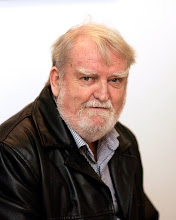The Plague, the Great Fire of London, Benjamin Franklin flying kites in a storm, the pontifications of Charles Darwin and Isaac Newton, its all there if you care to look. A French astronomer (Adrien Auzout) suggested building a giant telescope (1,000 feet long) to watch the animals on the moon. One scientist related how a thirteen year old girl had pockets full of salt to eat instead of sugar. She died young! A Doctor Nathan Fairfax relates how a women was persuaded to swallow two bullets to cure bowel problems. The good doctor provided 'Lady Holland's Powder' from his 'apothecary'. (What a lovely word, apothecary.) She used her chamber pot and 'twang' (his words, not mine) a bullet in the pot. (Note, no mention of a second bullet.) His conclusions, 'It should be said, that Nature, when put to shifts, finds out strange conveyances to rid the body of what is extraneous and offensive to it.'
I've seldom been to London. (Probably less than a dozen times in my entire life.) I don't know what Carlton House Terrace looks like. But I'd love to go inside and look through that pile of papers. Nearly 350 years of history. The mind boggles. There's always been clever people about, that's for sure. An example of what the Royal Society is all about. Enjoy!
1666
In 1666, Robert Boyle gave a somewhat gruesome account of one of the first instances of blood transfusion between animals, in this case two dogs. The following year, Richard Lower also performed the first transfusion of blood from a sheep into a human. He was one of the foremost surgeons of his day and was involved in pioneering discoveries in blood circulation and breathing. Although Lower understood the usefulness of blood transfusions following injury or other blood loss, in humans it often caused severe and sometimes fatal reactions, and 10 years later it was banned by Parliament. It was over 200 years later that an understanding of blood groups made routine transfusions possible. Lower’s work has been brought to life in An Instance of the Fingerpost by Iain Pears.
Daniel Glaser, Wellcome Trust.
Related scientific article
TitleTryals Proposed by Mr. Boyle to Dr. Lower, to be Made by Him, for the Improvement of Transfusing Blood out of One Live Animal into Another
AuthorR Boyle
JournalPhilosophical Transactions
URLhttp://dx.doi.org/10.1098/rstl.1665.0147
An early blood transfusion from lamb to man, ca 1705.
Portrait of Robert Boyle, by Johann Kerseboom, oil on canvas, 17th century.
© The Royal Society













3 comments:
I read about the bullet treatment too...fantastic concept! I'm glad they sorted out blood groups too...where would we all be if there were no transfusions
"An Instance of the Fingerpost" is a marvelous book! Thanks for this interesting post.
My husband loved all this stuff - he wanted to have a go at everything and his enthusiasm was catching. Thanks for the Royal Society's findings in a nutshell.
Post a Comment